28th February 2025
Integration After Ibogaine Therapy
The Path to Integration at Iboga Tree Healing House
At Iboga Tree Healing House, we recognize that genuine healing is not confined to the duration of your ibogaine treatment itself but extends into the days, weeks, and months that follow. Our ibogaine treatment centre is dedicated to helping individuals process and assimilate the profound revelations that arise during their experiences with ibogaine and other
psychedelics. With expert guidance and a nurturing environment, we support your journey of integration after ibogaine therapy—an essential step in translating these deep insights into lasting change. In this blog, we outline a structured approach to embedding the wisdom gained from your ibogaine journey into everyday life, a process we refer to as ibogaine integration, more widely known as psychedelic integration.
What Does Psychedelic Integration Entail?
Regardless of whether you seek ibogaine therapy to address behavioural patterns, substance dependence, or mental health challenges, integration after ibogaine therapy is the process of making sense of and embodying the emotional, cognitive, and spiritual insights that emerge during treatment. While ibogaine differs from traditional psychedelics—being classified as an oneirogen rather than a typical hallucinogen—the integration journey remains just as vital. At our retreat, we view this as an ongoing process rather than a singular experience. Whether you choose to navigate these revelations on your own or with professional support, the ultimate aim is to channel these profound realizations into meaningful, lasting transformations in your daily life.
For us, the heart of ibogaine treatment integration is the deliberate and continuous incorporation of newfound awareness into everyday habits, interpersonal connections, and personal well-being rituals. This intentional approach ensures that deep realizations evolve beyond momentary clarity, paving the way for meaningful and enduring transformation.

The Importance of an Integration Guide
Following a profound ibogaine experience, the mind can feel both illuminated and inundated with new perspectives. An integration guide serves as a steady anchor, assisting you in deciphering these insights and translating them into meaningful, practical changes. At Iboga Tree Healing House, we emphasize the value of a structured and intentional approach to post- experience reflection, recognizing it as a crucial element in fostering deep and lasting healing.
Advantages of Keeping an Integration Journal
Deepening Reflection and Understanding
Maintaining an integration journal offers a dedicated space for introspection, enabling you to document and explore your journey in a structured way. By putting your thoughts and emotions into writing, you create an opportunity to process profound experiences at a pace that feels right for you. This practice plays a key role in effective ibogaine integration,
helping to translate abstract realizations into tangible, purposeful actions that support lasting transformation.
Strengthening Memory and Retaining Insights
Recording your experiences allows you to preserve significant moments and evolving perspectives that might otherwise fade with time. By revisiting your journal, you can track your growth and recognize how your understanding continues to expand. This ongoing reflection is a vital aspect of making the integration journey more profound and impactful.
Honouring Emotional Expression
Keeping a journal provides a personal and unrestricted outlet for processing complex emotions. Whether you’re celebrating moments of clarity or working through difficult memories, this practice fosters emotional release and self-discovery. By engaging in this form of expression, you support the deep healing that lies at the core of our integrative ibogaine therapy approach.
Recognizing Growth and Milestones
Keeping an integration journal after ibogaine therapy serves as a record of your personal evolution, allowing you to observe the subtle yet meaningful changes in your thoughts and behaviours. By acknowledging these moments of progress, you reinforce your commitment to growth, nurture motivation and a deeper sense of purpose on your journey of self- discovery and transformation.
Laying the Foundation for Integration
Integration is not something that begins after your psychedelic experience—it starts well in advance. Preparing for the journey ensures that the insights you gain can be anchored in a stable and nurturing environment. Our holistic approach blends actionable strategies with compassionate support, providing you with the tools needed to seamlessly incorporate your ibogaine revelations into everyday life.
Set Clear Intentions
Before your experience, define positive, realistic goals. Your intentions help create a framework for understanding the insights that emerge and guide you in applying them later. This focus is an integral part of our ibogaine integration process, even if the language varies when discussing your personal journey.
Immerse Yourself in a Nurturing Space
The atmosphere in which your experience unfolds plays a crucial role in shaping both the journey and the integration that follows. A secure, soothing environment fosters deep healing, allowing insights to take root more effectively. At Iboga Tree Healing House, every aspect of our setting is intentionally crafted to support your transformation, ensuring that your path to
integration is met with comfort, safety, and care.
Nurture Mindfulness in Your Journey
Engaging in practices like meditation, breathwork, and yoga lays the groundwork for deeper receptivity and understanding of your experiences. These techniques cultivate inner stillness, allowing you to navigate your integration after ibogaine therapy with greater clarity, presence, and openness to transformation.
Follow Our Integration Framework
To solidify the insights gained from your ibogaine journey, we provide a structured integration plan tailored to support your ongoing growth. This may involve consistent creative expression, dedicated meditation practices, or setting aside time for reflective journaling. By following a thoughtful and intentional approach, you create the foundation for lasting healing that extends well beyond the initial experience.

Create a Strong Support System
Integration is most effective when shared with others who can offer understanding and encouragement. Whether through group discussions, individual therapy, or connecting with a like-minded community, having a network of support can be instrumental in your healing process. At Iboga Tree Healing House, we emphasize the importance of maintaining these
connections beyond your stay, as they play a crucial role in sustaining the transformation initiated by your ibogaine experience.
The Pace and Phases of Integration
Integration does not follow a fixed timeline. While many begin processing their experiences right away, taking advantage of a heightened state of receptivity, true integration unfolds gradually, sometimes extending over months or even years.
In the short term, daily mindfulness practices, consistent journaling, and light physical movement help establish a stable foundation. As your insights evolve, you may find yourself drawn to additional methods such as creative expression or structured therapeutic work. This adaptive and fluid approach ensures that your integration journey remains aligned with your personal growth and changing needs over time.
Overcoming Difficult Experiences
A psychedelic journey isn’t always smooth—intense emotions, unsettling realizations, and resurfacing memories can emerge along the way. While these moments may feel overwhelming, they are integral to personal growth and transformation.
When navigating these challenges, harm reduction techniques, community support, and professional guidance become invaluable tools. At Iboga Tree Healing House, we view every challenge not as an obstacle but as an opportunity for deeper self-awareness. This perspective is central to deeper integration after ibogaine therapy—acknowledging that both enlightening and challenging experiences contribute to meaningful, long-lasting change.
A Holistic Approach to Integration
Our integration model is designed to support every aspect of your journey, recognizing the complexity of the ibogaine experience. This framework encompasses multiple dimensions of integration, offering diverse methods for processing and embedding the insights gained during treatment. By addressing both the emotional and practical elements of healing, this
approach ensures a well-rounded and sustainable path to transformation.

The Six Pillars of Integration
1. Mind
This domain centres on the cognitive and emotional transformations that arise during the ibogaine experience. It involves reassessing long-held beliefs, exploring new perspectives, and engaging in practices such as journaling, self-inquiry, and
therapeutic discussions to process these mental and emotional shifts effectively.
2. Body
The body serves as a vessel for both past wounds and newfound healing. Engaging in practices such as yoga, breathwork, and mindful movement fosters a deeper connection with your physical self, helping to release stored tension and integrate
transformation on a somatic level—an essential element of the ibogaine integration process.
3. Spirit
For many, ibogaine opens the door to profound spiritual exploration. Cultivating this connection through meditation, ritual, or prayer can provide a sense of grounding and purpose, allowing you to sustain and deepen the insights gained from your experience. Nurturing your spiritual well-being is a vital component of long-term integration and personal growth.
4. Lifestyle
Sustaining meaningful change often involves reshaping daily habits and routines. By establishing healthier boundaries and making conscious adjustments to align your actions with your newfound insights, you create a lifestyle that supports your
transformation, allowing it to become an enduring part of your everyday existence.
5. Relationships and Community
Meaningful connections play a vital role in the integration process after ibogaine therapy. Engaging with supportive friends, family, or like-minded communities provides encouragement, reinforces your healing journey, and fosters a shared space for growth. By opening up to those who understand and respect your experience, you strengthen both your personal transformation and the collective wisdom of the community around you.
6. Nature
Reconnecting with the natural world can be a powerful source of healing and renewal. Whether through eco-therapy like earthing, mindful walks, or simply immersing yourself in outdoor spaces, nature provides a grounding force that nurtures your well- being and reinforces the integration of your ibogaine experience. Embracing the rhythms of the natural world helps cultivate balance, perspective, and a deeper sense of interconnectedness.

The Six Pathways to Integration
• Contemplative and Creative
Combine introspective practices with creative outlets to deepen your self-exploration. Meditation, reflective journaling, or engaging in artistic endeavours provide opportunities to process your inner experiences and express newfound insights in meaningful ways.
• Internal and External
There will be times when deep internal work is needed, while other moments may benefit from connecting with supportive communities. A balance of self-reflection and external interaction is crucial for a well-rounded integration process after ibogaine therapy. Both personal introspection and external conversations contribute significantly to your overall healing and growth.
• Creative and Open
Let creativity unfold freely, whether through drawing, writing, or other forms of artistic expression. This openness encourages the release of subconscious insights, allowing them to surface naturally and aid in your integration.
• Conscious and Subconscious
Incorporate both the insights you are consciously aware of and those hidden in the subconscious. By exploring both levels of awareness, you deepen your understanding and enhance the healing process, enriching the journey of integration.
• Self-Care and Personal Growth
It’s essential to take care of yourself while also gently challenging your limits. This balanced approach encourages lasting transformation. If you return to your pre-treatment habits and comfort zones, it’s unlikely that you will experience the gradual, profound change needed to heal from addiction, depression, or PTSD.
• Active and Reflective
At times, integration requires active steps, while other moments call for letting insights naturally unfold and settle. Understanding when to engage and when to pause and reflect is crucial for maintaining balance in the integration process.
Together, these pillars and pathways create a well-rounded framework for a more complete integration after ibogaine therapy offering a dynamic and holistic path to deeper self- awareness and personal growth.

Using Journaling for Integration
Journaling is one of the most powerful tools for processing your psychedelic journey. It allows you to document the nuances of your experience while also serving as a reflective instrument for continuous self-growth. Below are some prompts to help guide you through this reflective process, supporting your personal journey of psychedelic integration.
Reflecting on Your Experience
• Substance and Method of Administration
What substance did you use, and how was it administered? Take time to consider the specific details of your intake process and how these factors may have influenced the course of your journey.
• Mindset and Preparation
What were your intentions and mental state going into the session? Reflect on how your preparation and mindset may have shaped the experience and its outcomes.
• Setting and Support
Where did the experience unfold, and who was present? Consider how the environment and the support you had influenced the course of your journey.
• Intentions vs. Results
Compare the intentions you set before the session with the insights you gained. What aspects aligned, and what outcomes were unexpected or surprising?
Reflecting on Emotions and Symbols
• Emotional Landscape
What emotions emerged throughout your experience? Identify the moments that felt especially transformative and explore the reasons behind these emotional shifts.
• Visual Imagery and Symbolism
What images or symbols stood out during your journey, and what might they symbolize? Reflect on how these visuals might connect to your deeper, internal world.
• Recurring Themes
Did you notice any repeating patterns or themes in your experience? Consider how these recurring elements might inform and shape your ongoing ibogaine integration process.
Exploring the Mind-Body Connection
• Physical Sensations
What physical sensations did you experience during your journey? Reflect on how these sensations might deepen your understanding of the healing process and your body's role in it.
• Movement and Breath
How might practices like yoga or breathwork aid in your integration after ibogaine therapy? Consider how these methods can help you maintain a strong connection with your body and support your ongoing healing.
• Lifestyle Shifts
Have your perspectives on diet, exercise, or overall wellness changed since your experience? Explore how these newfound insights can influence and reshape your daily routines and lifestyle choices.
Insights into Your Spirituality and Relationships
• Spiritual Connection
Were there moments during your experience when you felt a sense of unity or a heightened purpose? Reflect on how these experiences may have shaped or influenced your spiritual beliefs and practices moving forward.
• Relationships
How has your journey influenced your relationships with others? Consider the steps you can take to strengthen and nurture connections that support your growth and well-being.
• Community Engagement
Reflect on how sharing your experience within a community could deepen your healing process. Consider the role that community support plays in your ibogaine integration and how it can contribute to your ongoing growth and transformation.
Ongoing Considerations for Integration
Integration is an ongoing process, not a single event. It’s a continual journey of self- exploration and development. As you integrate your insights into your daily routine, consider these practices to foster enduring healing and long-term transformation.
Consistent Self-Reflection
Make time regularly for introspection, whether through journaling, meditation, or conversations with trusted individuals. This ongoing reflective practice strengthens your journey of integrating ibogaine insights, ensuring continuous growth and progress.
Incorporating Insights into Daily Life
Make mindful, gradual adjustments that align with your new perspectives. Whether it's modifying your daily routine or establishing healthier boundaries, these intentional changes help transform insights into enduring, positive habits.
Professional Support
If challenges emerge, consider reaching out to therapists or integration specialists for guidance. Their expertise can provide fresh insights and help you stay on course as you continue to deepen your ibogaine integration journey.
Creating New Intentions
As your journey progresses, take time to reassess your goals. Set new intentions that reflect your current state of being and encourage continuous personal growth and transformation.

A Lifetime of Transformation
The integration process is a lifelong commitment—a continuous path of healing, self- discovery, and growth. At Iboga Tree Healing House, we honour every phase of your journey, from the initial breakthroughs to the ongoing efforts of incorporating psychedelic experiences into a rich and fulfilling life.
Each journey is individual, and while there may be moments of difficulty, the rewards are deeply impactful. By accepting both the bright and shadowed aspects of your experiences, you pave the way for lasting transformation.
We are privileged to accompany you as you transform your psychedelic insights into profound, enduring change. Our approach is both holistic and compassionate, ensuring that every dimension of your journey—mental, physical, and spiritual—is nurtured. This thoughtful, balanced method is central to our philosophy and a natural extension of our integrative ibogaine therapy.
We encourage you to engage with the practices, reflections, and creative exercises shared in this blog. Approach your journey with openness and patience, trusting that every step you take leads to a deeper, more balanced life.
22nd January 2025
Reconnecting with Your Authentic Self Through Ibogaine and Psychedelics

Reconnecting with Your Authentic Self Through Ibogaine and Psychedelics
Despite how confidently we present our lives as fulfilling or how often we convince ourselves that we’ve had “happy” childhoods, there’s often a piece missing from the puzzle—our emotional well-being. Many of us evaluate our past based solely on physical needs being met while overlooking emotional scars that may linger. For those seeking deeper emotional healing, reconnecting with your authentic self through ibogaine and psychedelics offers a profoundly transformative approach.
The reality is that every single one of us has experienced some degree of trauma, whether we consciously recognize it. Even those who feel their childhoods were “good” often carry unresolved emotional wounds locked within their subconscious minds. With the help of ibogaine therapy at Iboga Tree Healing House, our centre located in rural Portugal, individuals can unlock those wounds, allowing them to move forward with clarity and self- awareness.
This article explores the journey of reconnecting with your true self, diving into how emotional trauma affects the subconscious, and how plant medicines like ibogaine serve as a bridge toward healing. By the end, you’ll have practical tools to process emotions in real time, helping you reduce reliance on maladaptive coping strategies such as substance abuse or avoidance behaviours.

The Depth of Trauma and How It Shapes Our Lives
Trauma is an unavoidable part of life, taking on many forms—whether emotional, physical,or sexual. Its aftermath often varies in severity, presenting symptoms like anxiety, depression, flashbacks, and addiction. In some cases, trauma can lead to self-harming tendencies, low self-esteem, or PTSD. Yet, many people fail to connect these symptoms to unresolved emotional wounds buried in their subconscious minds.
Therapeutic approaches like reconnecting with your authentic self through ibogaine and psychedelics have shown remarkable potential in uncovering and addressing these hidden traumas. Unlike traditional talk therapy, ibogaine therapy works directly with the subconscious, peeling back layers of suppressed memories and emotions. During an ibogaine journey, individuals often experience vivid, dream-like visions that reveal insights about past events—many of which were long forgotten but still impact present-day behaviour.

The Role of Dissociation in Emotional Survival
Dissociation is a protective mechanism the brain uses to shield us from overwhelming emotional pain. It can manifest in subtle ways, like zoning out during stressful situations, or more extreme forms, such as developing alternate identities or disconnecting from reality altogether. For many, dissociation becomes a go-to survival tactic during childhood trauma when there are no safe outlets for their emotions.
However, dissociation comes at a cost. By separating from painful emotional experiences, we lose touch with parts of ourselves. This disconnection can lead to addiction, avoidance, and a lack of emotional intimacy in adulthood. That’s where reconnecting with your authentic self through ibogaine and psychedelics becomes invaluable. These plant medicines enable individuals to confront dissociated emotions, offering a safe space to reintegrate and process them fully.
Through this deep inner work, clients at Iboga Tree Healing House often report profound breakthroughs in understanding their behaviours and emotional responses, paving the way for healthier patterns and renewed connections with themselves as they seek to heal from conditions as diverse as PTSD, depression, chronic anxiety, behavioural addictions, as well as substance addictions.
The Subconscious Mind as a Warehouse of Limiting Self-Beliefs
Our subconscious mind is an incredibly powerful tool, storing memories, emotions, and beliefs that shape how we navigate the world. While the conscious mind focuses on rational thoughts and problem-solving, the subconscious operates beneath the surface, automating processes like breathing, digestion, and even habitual behaviours.
Unfortunately, the subconscious also serves as the keeper of unresolved trauma. Childhood experiences, especially those that involved emotional invalidation or neglect, leave lasting imprints. For instance, a child frequently dismissed as “too emotional” may grow up internalizing the belief that their feelings are unimportant or unwelcome. These subconscious beliefs then dictate their adult relationships, often resulting in emotional disconnection or dysfunction.
One of the most transformative aspects of reconnecting with your authentic self through ibogaine and psychedelics is the ability to access the subconscious mind directly. During ibogaine therapy, individuals gain clarity on the core beliefs and memories that drive their behaviours, creating space for healing and self-compassion.

How Trauma Becomes Suppressed in the Mind
When we face intense emotional or physical stress, the brain often pushes painful memories into the subconscious as a way to cope. This suppression helps us survive in the short term, but over time, these buried memories can cause emotional distress, anxiety, or even physical ailments.
For example, a child who is repeatedly told to “stop crying” may learn to suppress sadness entirely. As an adult, this individual might feel inexplicably triggered and reactive by situations where they perceive emotional invalidation or gaslighting in the present moment, even without understanding the connection to their childhood experiences. This unprocessed trauma can manifest as heightened sensitivity, anger, or withdrawal.
Reconnecting with your authentic self through ibogaine and psychedelics allows these suppressed memories to resurface in a safe and controlled environment. At Iboga Tree Healing House, clients often report experiencing vivid emotional and sensory recall of past events during their ibogaine sessions. This process not only helps release stored trauma but also provides valuable insights into the origins of behaviours like addiction or emotional detachment.
The Cost of Rejecting Parts of Ourselves
As children, we are naturally whole and authentic. However, to survive in environments where certain emotions or behaviours are deemed “unacceptable,” we learn to suppress parts of ourselves. For example, a child who senses that anger is frowned upon may suppress this emotion entirely, leading to internalized shame or self-hate later in life.
The act of rejecting parts of ourselves creates a lifelong struggle with self-acceptance. Many of us grow up feeling disconnected from our true selves, which leads to anxiety, low self- worth, and difficulty trusting our instincts. Reconnecting with your authentic self through ibogaine and psychedelics offers a way to mend this internal split. By embracing the parts of ourselves we’ve long rejected, we can nurture self-acceptance and emotional healing.

A Step-by-Step Guide to Processing Emotions in Real-Time
Understanding Emotional Processing
Emotions act as a guide, offering valuable feedback about our internal states and external circumstances. However, society often teaches us to suppress or distract ourselves from difficult emotions, which only traps them within our bodies and minds. The good news is that emotions are naturally designed to flow if we allow them to.
This process will teach you how to unconditionally be with whatever challenging feeling you would usually run from. Instead of seeing your emotional pain as something that is trying to harm you, why not view it instead as an important messenger crying out for your attention? It’s almost as if it were a small child who needs comforting and validation from a wise adult.
By engaging in this process, you will essentially be running towards your emotional discomfort instead of away from it, setting yourself up to receive the message it has to deliver.
Over time, as you turn this into a regular practice—and it will take persistence and repetition—you will likely find that you no longer feel the need to try to distract from, numb, fix, dissociate from or self-medicate to deal with your emotions. Remember: emotions only frighten us because we have been conditioned to avoid them.
To help you identify or name emotional states, you may use the “Feelings Wheel” included below; you will surely find it invaluable in helping you identify what you are feeling in any given situation.

How to Do the Emotional Processing Technique
1. Create a Safe Space: Use the feelings wheel to identify what emotion you are experiencing in the moment. It would be a good idea to save it as a PDF on your phone so that you always have it with you. Find a quiet, distraction-free environment where you can focus inward. Lie down or sit, close your eyes, and turn your attention inward. You can either do this in silence or put on very low, soothing music.
2. Tune Into Physical Sensations: Begin by taking a few long, deep breaths for a few minutes. Mentally scan your body from the top of your head to your toes, noticing where in your body you feel any kind of unpleasantness. Is it a heaviness in your chest? A tightness in your stomach? Tingling in your arms or legs? It may take you some time to locate where in your body the tension is. Be patient with it, as all of this will likely be new to you.
3. Avoid Judging or Resisting: Let the emotion exist without trying to fix it or push it away. Should you encounter any mental narratives, such as “I can’t do this,” or that this exercise is pointless, remind yourself that these thoughts are reflections of the hopelessness you felt as a child when you first encountered this emotion and were invalidated, not learning how to process it.
4. Ask Yourself Questions: Anchor your attention by asking, “What does this feel like?” Try to focus on any feelings that arise by asking yourself if there is any sound, taste, texture, smell, or image that comes up. Remember, you are not looking for a mental story about the feeling (e.g., “I feel worthless” or “I’ll never finish this project in time for the deadline.”). Instead, you are looking for descriptive sensations like, “this feels heavy” or “I see the color red.” After each new sensory “package” or “download” appears (as we like to call it here at Iboga Tree Healing House), repeat the question to it, always anchoring yourself in the five senses as you feel for a response. If mental stories about the feeling arise, let them appear, but then refocus on your work.
5. Witness the Emotion’s Journey: Allow the emotion to evolve naturally. It might shift in intensity or transform into another feeling entirely; for example, anger might transform into sadness. Know that this is normal and expected within this process. Should you experience any powerful emotional reactions, like shaking or uncontrollable crying, let them flow and don’t suppress them—this is what it feels like when your body clears itself of stored trauma.
6. Address Resistance with Compassion: If you find yourself continually resisting the process, treat that resistance as part of the journey. Use the anchor question, “What does this resistance feel like?” Do not berate yourself for it. Resistance is often a protective layer, especially when it comes to severe trauma. If you instinctively feel that there is something hidden underneath the present emotion, ask yourself to feel it by saying, “What is underneath this fear? Is there anything more painful there?” However, do not force yourself to go deeper. Truly ask yourself if you are ready to dive deeper. This will empower you to give yourself a choice, which you may not have had when a specific traumatic event occurred. If this is the case, stay with whatever emotion you are currently working with.
7. Let the Emotion Release: Emotions will dissipate on their own when fully felt, and this usually won’t take long. The reason we aren’t aware of this—and often think that giving an emotion attention will make it intensify—is precisely because we are too quick to reach for a behavioural distraction or a substance whenever we experience an uncomfortable emotion. This is why it is important to stay present with the process until the intensity naturally subsides.
8. Integrate What You’ve Learned: Afterward, reflect on any insights that arose. These revelations can guide your personal growth. We encourage you to spend some time journaling about what came up for you.
Essentially, this process is the closest thing to experiencing a plant medicine journey like ibogaine, ayahuasca, or psilocybin: you are simply lying down and focusing on the messages your body and subconscious are bringing up for you. This is why it is essential as a mindfulness practice after ibogaine therapy, and you would benefit greatly from making it a regular practice in your day-to-day life. By practicing these steps regularly, you’ll build emotional resilience and reduce your reliance on maladaptive coping mechanisms.
Why This Journey Matters
The path to self-discovery is not always easy, but the rewards are profound. At Iboga Tree Healing House, the combination of plant medicine therapies and holistic aftercare offers clients an unparalleled opportunity for growth. Reconnecting with your authentic self through ibogaine and psychedelics enables you to shed layers of emotional pain, reconnect with your
innate wholeness, and move forward with a renewed sense of purpose. Healing emotional wounds and rediscovering your true self requires courage, patience, and the right tools, which is why reconnecting with your authentic self through ibogaine and psychedelics offers a path toward profound transformation. Whether you’re dealing with addiction, emotional pain, or a sense of disconnection, plant medicine therapies provide a way to access and heal the root causes of these struggles. To learn more about the healing work we do at Iboga Tree Healing House, don’t hesitate to reach out. Their experienced team is ready to guide you toward a brighter, more authentic future.
16th January 2025
A Renewed Call to Reevaluate Ibogaine in the US

A Renewed Call to Reevaluate Ibogaine in the US
The discourse surrounding ibogaine and psychedelics in general continues to evolve, with a recent Joe Rogan podcast sparking a renewed call to reevaluate ibogaine in the US and its immense potential as a healing agent. At Iboga Tree Healing House, we’ve consistently championed reforms and responsible regulation of ibogaine. While technically classified as an oneirogen—a substance inducing dream-like states—ibogaine aligns with the medicinal and therapeutic value of other psychedelics like ayahuasca, psilocybin, and 5-MeO-DMT. Sadly, it is down to the outdated legislation in the US which still to this day undermines the potential for transformative healing that these substances offer.
To understand why ibogaine remains criminalized, we must revisit pivotal moments in U.S. history, particularly during the Nixon administration (1969–1974). This era shaped drug policy and its interplay with American foreign policy, such as the Vietnam War, and the countercultural movements challenging societal norms.

Nixon’s War on Drugs: Policy Driven by Control
In the Joe Rogan podcast, the War on Drugs initiated by President Richard Nixon in 1971 is scrutinized, with Rogan explaining how this campaign was less about concerns over the health of Americans, and more about consolidating Nixon’s political power. Substances like ibogaine and classic psychedelics were designated Schedule I drugs, which meant they were labeled as having "no medicinal value" and high abuse potential—assertions lacking scientific basis. This bizarre classification primarily served to marginalize dissenting groups, such as anti-war protesters and Black communities.
John Ehrlichman, one of Nixon’s top aides, candidly admitted in a 1994 interview:
"We knew we couldn’t make it illegal to be either against the war or Black, but by getting the public to associate the hippies with marijuana and the Blacks with heroin, and then criminalizing both heavily, we could disrupt those communities."
This confession underscores how policies like the War on Drugs prioritized political agendas over public health. The fact that psychedelics, including LSD, psilocybin, ayahuasca, 5-MeO-DMT—all of which have immense therapeutic value in the treatment of PTSD, depression, emotional traumas, substance and behavioural addictions—are still to this day classified as Schedule I substances makes it more than time for a renewed call to reevaluate ibogaine in the US.
Their prohibition halted groundbreaking therapeutic research and applications in mental health and addiction treatment that had gained momentum in the mid-20th century, but is resisting clear evidence of ibogaine’s effectiveness in treating not only addiction, but also PTSD, depression, and neurodegenerative conditions such as Parkinson’s disease and Multiple Sclerosis.

Suppressed Research and Its Consequences
Before the Controlled Substances Act of 1970 relegated these compounds to Schedule I, researchers were exploring classic psychedelics for their therapeutic potential. LSD showed promise in treating depression and alcoholism, while psilocybin alleviated anxiety in terminally ill patients.
Ibogaine stood out for its effectiveness in addressing opioid addiction. Researcher Howard Lotsof documented how it alleviated withdrawal symptoms and reduced cravings while providing psychological insights. Despite such evidence, ibogaine’s classification as a Schedule I drug disregarded its potential, stalling legitimate clinical research and trials.
With the current opioid crisis in the US, it does indeed seem paramount to heed the call to reevaluate ibogaine in the US, not only from a legal standpoint, but from a medical one also.
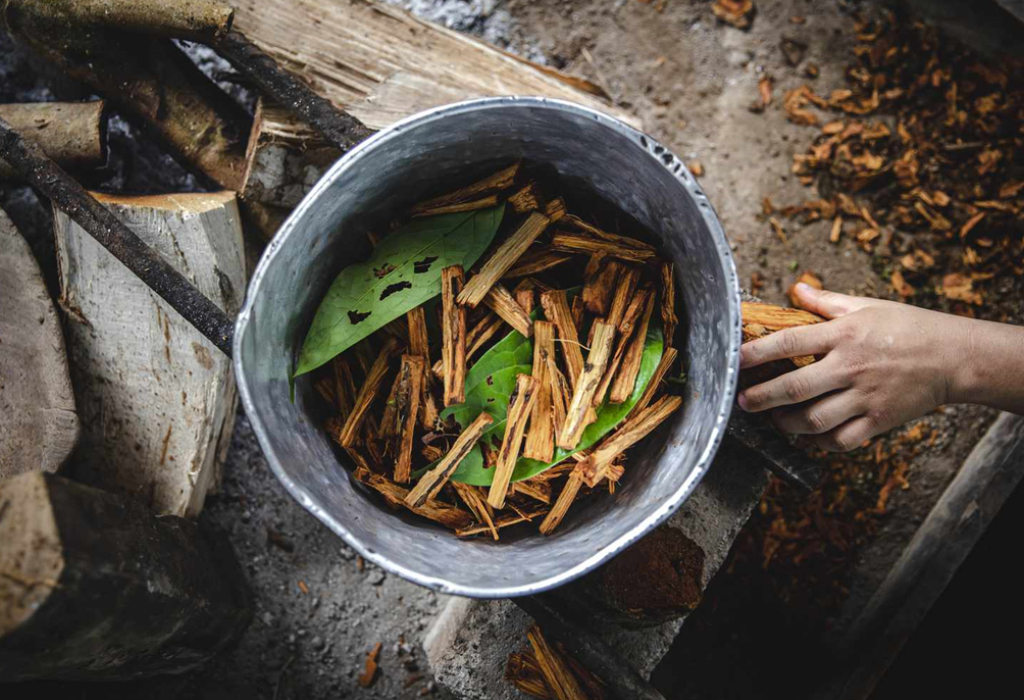
Why Classic Psychedelics Have Therapeutic Applications
Classic psychedelics such as ayahuasca, psilocybin, and 5-MeO-DMT have garnered significant attention for their potential therapeutic applications in treating emotional trauma, depression, PTSD, addiction, and other mental health conditions. Each of these substances offers distinct benefits:
Ayahuasca: This traditional Amazonian brew combines the leaves of Psychotria viridis, containing DMT, and the vine Banisteriopsis caapi, which includes monoamine oxidase inhibitors (MAOIs). Ayahuasca has been shown to activate brain regions associated with emotional processing and memory, facilitating the confrontation of past traumas and the release of emotional blockages. Studies suggest that its therapeutic properties may be due to this activation, enhancing self-acceptance and allowing safe exposure to emotional events.
Psilocybin: Found in certain species of mushrooms, psilocybin is known for its efficacy in treating depression and anxiety. Research indicates that psilocybin-assisted therapy can lead to significant reductions in depressive symptoms, with effects comparable to traditional antidepressants. Additionally, psilocybin has been associated with improved emotional processing, increased psychological flexibility, and enhanced well-being.
5-MeO-DMT: Often referred to as the "God molecule," 5-MeO-DMT is a potent psychedelic that facilitates profound spiritual and emotional breakthroughs. Naturalistic studies have reported a favourable safety profile and a strong potential for psychotherapeutic benefits, including the treatment of trauma, addiction, and existential distress. Its short duration of action (30-90 minutes) may offer clinical advantages over longer-lasting psychedelics in certain therapeutic settings.
The International Centre for Ethnobotanical Education, Research, and Service (ICEERS) has been instrumental in advancing research on these substances, particularly ayahuasca. Their comprehensive reports highlight the therapeutic potential of ayahuasca in enhancing self-acceptance and facilitating emotional processing, supporting its use in treating impulse-related disorders, personality disorders, substance use disorders, and trauma.

The Lingering Legacy
Nixon’s policies initiated decades of systemic harm, disproportionately affecting marginalized communities and fuelling mistrust in institutions. This legacy continues to obstruct efforts like the timely and renewed call to reevaluate ibogaine in the US, with its burgeoning opioid crisis showing little signs of stopping unless more humane, compassionate forms of treatment such as the latter are implemented. The association of these substances with counterculture movements was responsible for the demonization of ibogaine and psychedelics, overshadowing their therapeutic benefits.
At Iboga Tree Healing House, we assert that dismantling these structures and prioritizing evidence-based approaches is essential. Psychedelics, including ibogaine, should be seen as tools for healing rather than as threats to societal norms. If it is fair to say that today’s society is chiefly responsible for a host of mental health issues such as behavioural and substance addictions, depression, anxiety, autoimmune conditions, and PTSD, then should it not be fair that the onus of this be on the health institutions and legislative bodies in each country to decriminalise and regulate both ibogaine and psychedelics for clinical and therapeutic use?
27th January 2021
The Addiction Treatment Industry: A Closer Look
The addiction treatment industry is full of committed professionals doing their best to help addicts escape from the nightmare of addiction. We would like to preface this post expressing our gratitude, love, and support for all of those remarkable individuals devoting their lives to the struggle against addiction. But as in any industry, there are a number of problematic trends, profit-motivated businesses, and self-serving individuals and institutions that are preying on the afflicted, and lining their pockets as their clients suffer. Today we’ll be taking a look at the major problems we see in the drug rehab industry.
The Costs
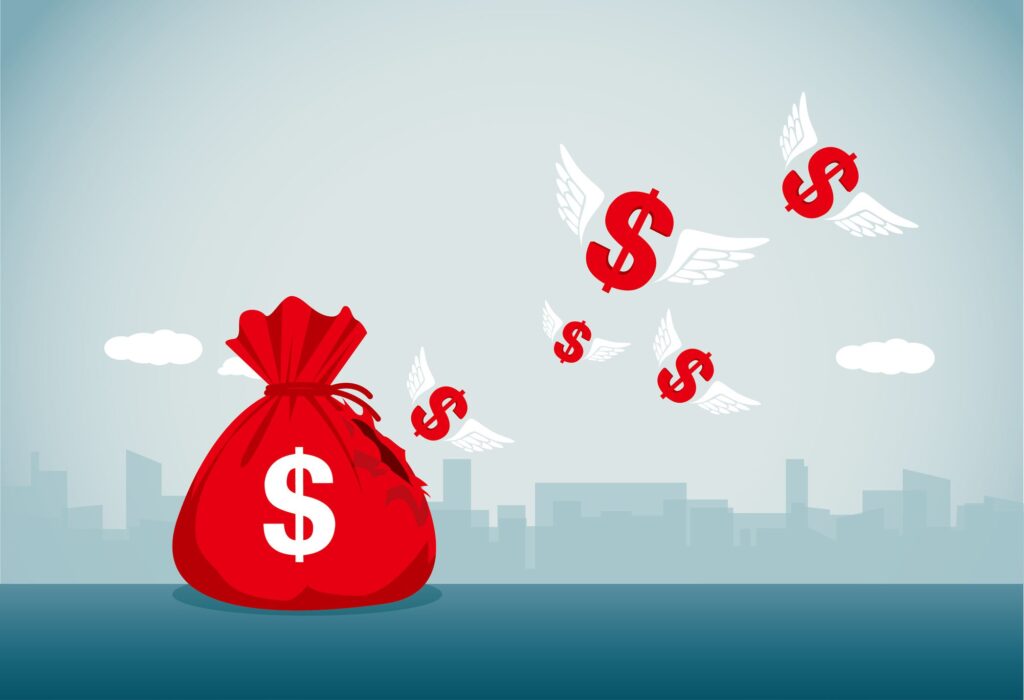
This problem is particularly pronounced in America, but it exists around the world. This recent Vox study explored the astronomical costs of treatment, telling the stories of families taken to the brink of financial ruin by their attempts to save a loved one. The National Survey on Drug Use and Health conducted in the US in 2018 concluded that approximately 314,000 Americans wanted and needed treatment in 2018, but were unable to afford it because they weren’t covered by insurance. Another study found that drug treatment services were over 10x more likely to be excluded from insurance plans than other medical services and that the disparity was growing larger.
Insurance companies have also done a poor job of selecting treatment providers within the rehab industry, often pushing clients to cheaper centers in Florida rather than more expensive facilities closer to home. An influential article published by the New Yorker last fall details the “Florida Shuffle”, a phenomenon where addicts are funneled into sober homes who profit from insurance payouts while offering minimal services beyond 12 Step meetings and urine tests. In fact, many of the treatment centers and sober homes in America were charging insurance companies up to $20,000 per month for the urinalysis of a single patient, while offering sub-standard care.
The New Yorker article tells of one such center, Good Decisions, operated by Kenneth Bailynson, who bought the Green Terrace Condominium complex and opened a urinalysis lab. As the New Yorker writes:
The Palm Beach Post reported that Bailynson turned Green Terrace into “an armed camp, where guards with guns made sure addicts did not leave.” At his detention hearing, Jim Hayes, the Assistant U.S. Attorney for the Southern District of Florida, described Good Decisions as a “piss farm,” in business “only to harvest residents’ urine.”
Facilities like these often attempted to lure patients in with smartphones, gift cards, and free rent. Many of the sober homes and treatment centers in the existing rehab industry have condoned drug use on their premises, and confined patients against their will. As John Lehman of the Recovery Outcomes Institute noted, South Florida became “the relapse, rather than the recovery, capital of the world.
Enduring Questions

Because relapse is so common, facilities are subject to so little regulation, and the fact that we still have an incomplete understanding of the neurological processes that underlie addiction, it’s difficult to pinpoint exactly what treatments, or elements of treatment programs, work. As one analyst told Vox, There are 4,000 quality control measures for Medicare and Medicaid services in America. “There are none for addiction - zero.”
Shatterproof, an American organization dedicated to establishing national standards of care for addiction treatment is looking to change this reality. They’ve teamed up with many large insurers to try to “identify, reward, and promote” treatment providers who scrupulously follow the scientific evidence and provide a high standard of care. While cynics might speculate that this is the result of insurance companies losing lawsuits against the families of those victimized by the Florida Shuffle and insurance coverage that discriminates against the addicted (the case Wit vs. United Behavioral Health found the company guilty of wrongly rejecting 50,000 claims, and other lawsuits abound), the move toward national and even international standards is largely positive.
But the fact remains that studies of treatment outcomes are largely conducted by the facilities themselves. They generally rely on self-reporting from past clients, with no verification of claims of sobriety. And the treatment centers are incentivized to select data points, or even falsify data, in order to appear more attractive to potential clients. While Shatterproof aims to become similar to Yelp! and allow potential clients access to data from patients, insurance companies, and providers in order to accurately assess facilities, we’re a long way from having the information we need.
The Influence of Stigma
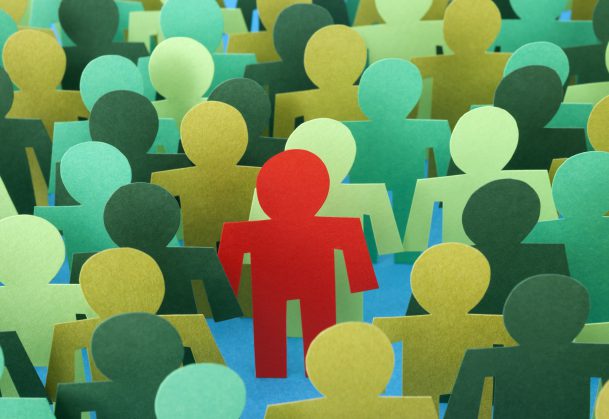
Because of the dangerous stigma which surrounds addiction, many promising treatments, and public health policies are neglected. Opioid replacement therapies, needle exchanges, safe injection sites, and promising alternative therapies like ayahuasca and ibogaine remain illegal in a host of jurisdictions. As the opioid crisis rages on, and more lives are lost to overdose every day, the stigma of addiction often prevents lawmakers from utilizing approaches that have been proven to save lives and experimenting with treatments that have the potential to win the war with addiction.
While the scientific evidence that addiction is a medical problem occurring in the brain has become overwhelming, people and governments in many countries around the world are stubbornly clinging to misguided moral notions that force us to battle addiction with one hand tied behind our backs. Can you imagine if potentially lifesaving cancer treatments were neglected, hospitals’ mortality rates went unrecorded, or those with hypertension were told that their inability to lower their blood pressure was a personal failing? Most of the problems we are experiencing in the rehab industry could be overcome if the public demanded that addiction be dealt with as a common health problem.
At Iboga Tree Healing House we are deeply committed to the safety and well-being of our patients. We will continue to advocate against the stigma of addiction, and for the strictest possible standards in patient safety and quality of treatment. If you feel that you need a treatment center that is devoted to the health and well-being of its clients, get in touch with us today!
21st January 2021 • Sticky Post
Rehab in France: Why French Addicts Are Seeking Addiction Treatment Abroad
France’s drug problem is bad, and it has been getting worse. There are epidemics of heroin use, a flood of cocaine from South America, and the constant importation of hashish from nearby Morocco. In 2019, President Emmanuel Macron admitted that the country was losing the fight against drugs in neighborhoods such as Marseille’s notorious 14th District and Paris’ “banlieues.” As the opioid crisis rages on, increasing numbers of French people have been experimenting with and becoming addicted to, the same opioid-based pain pills that have devastated communities across the United States. People in France are dying almost every day from opioid overdoses, and the problem seems likely to grow worse in the new decade.
The banlieues, social housing projects in the suburbs of major cities, are a huge cause of concern. They’re plagued by violence, rampant drug use, and radical Islam, but France’s drug problem goes far deeper than the slums of Paris and Marseille. In fact, the country has some of the highest rates of drug use in the E.U., together with some of the strictest laws concerning drug use. France has continually resisted calls to modernize its drug policies, even while acknowledging the shortcomings of the status quo. If you’re investigating rehab in France looking for solutions and a sense of hope, turning your gaze abroad may seem like the wisest approach.
Why Portugal?
Addiction treatment in France: why french addicts are looking abroad

Portugal was in the midst of an epidemic of heroin addiction (much like France in the 1980s) when they made the dramatic decision to embrace the principles of harm-reduction and decriminalize the consumption of all drugs. As one of the architects behind Portugal’s new approach explains it: “We realized we were squandering resources. It made much more sense for us to treat drug addicts as patients who needed help, not as criminals.” By removing the threats of prosecution and incarceration, Portugal has reduced the stigma surrounding addiction, and the number of addicts receiving treatment has increased by 60% since 1998. The results the country has achieved simply by treating addicts with dignity and viewing addiction as a health issue has caused countries such as Canada Switzerland and Germany to embrace harm-reduction. Portugal’s clear-headed, compassionate approach to treating addiction makes it an ideal destination for those attempting to overcome substance-abuse problems.
France has embraced some of the principles of harm-reduction, particularly by implementing needle exchanges and a pilot project for supervised injection sites. But the country still relies on opioid replacement therapy, usually involving buprenorphine, as a way to treat opioid addiction. While buprenorphine can stabilize the lifestyles of addicts and prevent HIV and overdoses, it leaves those seeking treatment dependent on a narcotic substance and does little to address the issues underlying addiction. If you’re looking to truly defeat your addiction, buprenorphine probably isn’t the best option.
There are some publicly funded options for rehab in France, and there are also privately run residential treatment facilities in nearby Switzerland. These centers have the benefit of being close to home, but for those without substantial bank accounts, the cost of effective treatment in a comfortable setting can be staggering. Luxury private facilities have rates in the region can be as high as 77,000 USD per week! And if you’re looking for a publicly funded rehab in France, you need to be prepared for wait times spanning weeks, or even months, before being placed in an overcrowded and under-funded treatment facility. The shortage of treatment beds and affordable facilities has pushed many addicts to the brink of despair.
In theory, seeking rehab in France will not put you at risk of stigma for being an addict in a society that views drug use very harshly. But if you’re living in a small community, word might still spread. If you’re looking to be treated with dignity and respect, experience compassionate care, and maintain your privacy, going abroad might be your best option. Drug addiction is still viewed harshly in many French communities, particularly rural areas, and studies finding that addiction carries more stigma than mental illness. In many small towns, the addicted are still seen as criminals who have succumbed to a “moral failing” rather than sick people in need of medical treatment. If you’d prefer to be treated as a person, rather than a junkie, as you begin your recovery journey, you might want to consider seeking treatment in Portugal!
What Are The Benefits Of Treatment Abroad?
1) Environment

Leaving an environment full of familiar stressors and temptations can have a beneficial effect in treatment, and Portugal is a great place to recover from the traumas related to addiction. It’s a picturesque country with a lovely Mediterranean climate. It’s dotted with quaint villages, ancient ruins, majestic castles, and miles of beautiful coastline. And there are few regions better suited to recovering your health than Portugal’s sun-drenched Alentejo region. A land of rolling hills and vast plains, the Alentejo offers visitors the opportunity to recover their health and connections to the natural world by riding horses, watching birds, stargazing, hiking and cycling. Many French visitors are especially appreciative of the temperate climate, peaceful lifestyle, and delicious regional fare, all while feeling at home with a climate, culture, and society that is familiar enough to feel welcoming. All this, while enjoying a rehab facility that rivals a luxurious resort or hotel for a fraction of the cost of rehab in France. You’ll disconnect from a toxic environment and share amazing new experiences with people from all around the world!
2) Privacy

While increasing numbers of people are coming to the understanding that addiction is a medical issue, there is still a significant social and professional stigma that comes with seeking treatment for substance abuse. If you head to Portugal, it’s easy to tell friends, family members, and colleagues that you’re off on a much-needed vacation and avoid awkward conversations and prying questions. There’s also no risk that someone will spot you emerging from a clinic or support group meeting and start whispering.
3) Promising Treatments Unavailable At Home
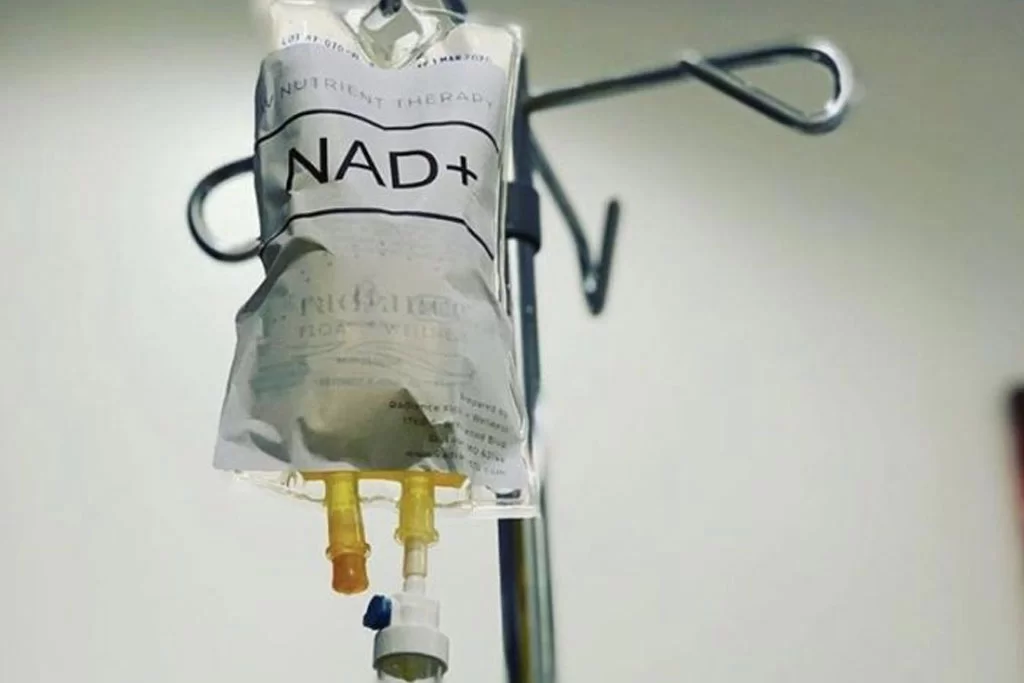
We’ve written a lot about the undeniable power of ayahuasca and ibogaine to combat the addictive properties of opioids and other drugs and to open the addicted mind to the idea of a positive transformation into sobriety. Because Portugal has decriminalized all drugs, promising treatments that cannot be obtained in a safe medical setting in France (where the substance is completely illegal) can be accessed here with the supervision of health-care professionals.
4) Easy Intake

When you’ve reached rock bottom, a treatment center that can quickly start the process of detox and recovery can be a life-saver. The prospect of waiting months for the in-patient treatment you need can be a heart-breaking, motivation-sapping roadblock. Options for rehab in France are often underfunded, one of the main reasons why the majority of French addicts are pushed into less intensive outpatient treatment programs and buprenorphine maintenance. Treatment centers abroad can immediately start the intake process, allowing you to strike back at your addiction when you’re feeling hopeful and motivated. This can make all the difference in the world!
Iboga Tree Healing House

At Iboga Tree Healing House, we have a unique ability to accommodate clients from around the world with our welcoming, open-minded, and international staff. You’d be hard-pressed to find a rehab more committed to the safety of their clients than Iboga Tree Healing House. We’re also deeply committed to maintaining a supportive and non-judgmental environment for facilitating recovery and personal growth.
In addition to offering iboga treatment, we also provide a wide array of holistic treatments, including breathwork, kundalini yoga, equine-assisted therapy, kambo, and more. All of these practices are extremely beneficial for re-energizing both body and spirit to pursue recovery. In combination with our ten-hectares of outdoor space, large terraces, and outdoor swimming pool, we let nature remind our clients to be grateful and receptive for new horizons and second chances. We have many testimonials from people around the globe who’ve benefited immeasurably from experiencing our treatments in beautiful, sunny Portugal. If you’d like to experience treatment abroad, don’t hesitate to get in touch!
20th January 2021
Alternative Addiction Treatment: Why Governments are Embracing Change At Last
As the opioid epidemic continues to ravage communities, end lives, and subject individuals and families to the horrors of addiction, a tipping point has been reached. Everyone knows somebody who has been prescribed a powerful, prescription painkiller and struggled with dependence. This health crisis, coupled with changing social attitudes that de-stigmatize addicts and addiction, has sparked a move to push the afflicted away from criminal justice systems and toward health care and treatment. As we begin to examine addiction without the blinders of moral censure and the criminalization of those in its grasp, citizens and their governments are exploring bold new alternative addiction treatment options that have shown great promise in healing the addicted. Let’s examine the factors behind this trend, and what it means going forward.
Big Pharma
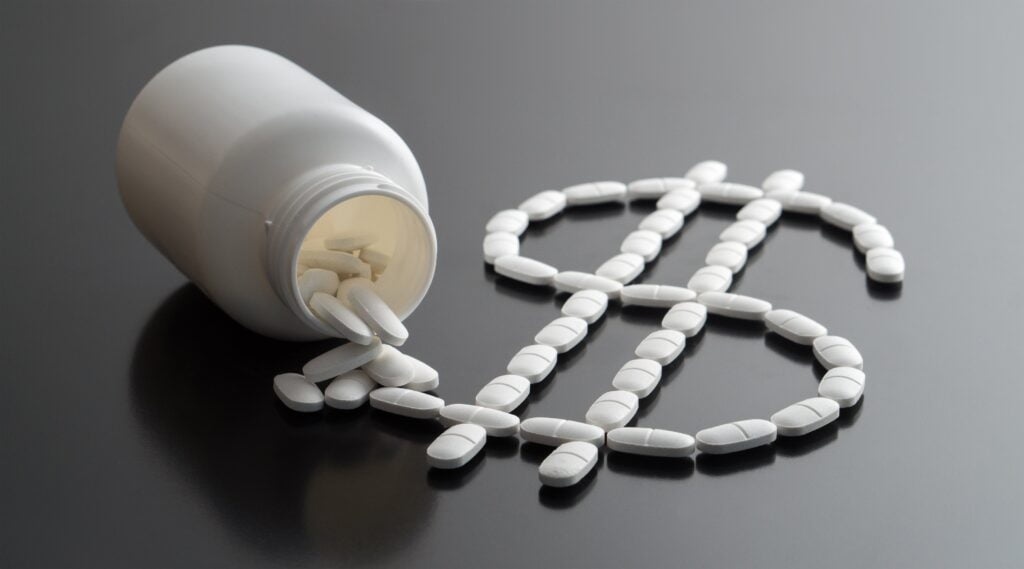
For years large, profitable, and seemingly respectable pharmaceutical companies like Purdue Pharma, McKesson, and Amerisource Bergen aggressively and misleadingly marketed addictive painkillers in spite of mounting evidence that the drugs were being abused. Communities were flooded with drugs such as OxyContin, and the effects were devastating. As legislators and the public realized the magnitude of the crisis, lawsuits mounted, PR firms scrambled, and treatment facilities were overwhelmed. One effect of the opioid crisis was a loss of trust in both drug manufacturers and the medical establishment, which elected to throw dangerous substances at the symptoms of pain, rather than addressing its root causes. This has led public health officials and addicts to move away from profitable, traditional treatments such as methadone, which create dependence and examine the problem of addiction with fresh eyes.
Neuroscience Breakthroughs
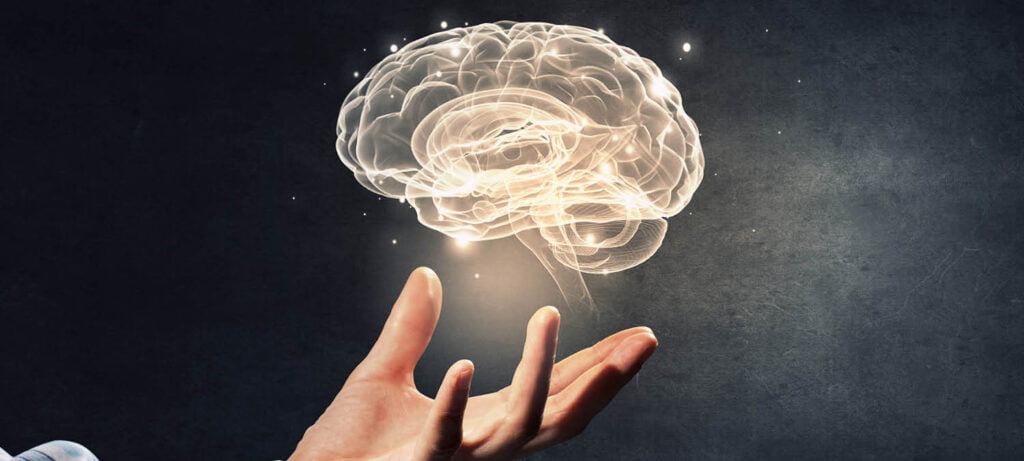
Over the past thirty years, our understanding of the nature of addiction has been fundamentally altered by technologies that give us access to the functioning of the addicted brain. We can now observe the neurological processes and genetic predispositions that feed addiction and create treatments that effectively put this information to use. We’ve learned that changes occur in the addicted brain which dramatically affect how addicts view reward and motivation, regulate emotion, and maintain (or fail to maintain) executive control.
As one researcher wrote of the changes that occur: “Most prominent are the disruptions of an individual's ability to prioritize behaviors that result in long-term benefit over those that provide short-term rewards and the increasing difficulty exerting control over these behaviors even when associated with catastrophic consequences.” Understanding the mental changes that addicts undergo is fundamental to creating alternative addiction treatment models that will rewire the brain, and allow those suffering from substance abuse disorders to return to themselves.
The Truth About Trauma
We’ve long known that trauma and addiction go hand in hand. As the physician and philosopher Gabor Mate has been preaching for years, addiction is often a response to pain and childhood trauma. Researchers at Harvard University have come to realize that Mate’s theories on the nature of addiction were worth exploring. Kerry J. Ressler, chief scientific officer at McLean Hospital and professor of psychiatry at Harvard Medical School has been researching both the psychological and neurological effects of trauma and has found that an overwhelming majority of addicts have been traumatized. He claims his research proves that addiction is “a biological disease. We all have innate drives toward food, sex, and other novelties, but when you begin to abuse drugs, these drives become hijacked so that the normal drives are not nearly as rewarding anymore.”
Dr. Ressler’s research explored the links between addiction, trauma, the amygdala, and the orbitofrontal cortex, areas of the brain which regulate goal-oriented behavior and emotional regulation. He found that increased levels of a neuroplasticity protein, called brain-derived neurotrophic factor (Bdnf), drive goal-oriented behavior. In contrast, stress or developmental trauma may lead to atrophy of the OFC neurotrophin systems, which in turn can lead to increased habitual behavior, such as drug-seeking.
It’s clear that reversing these changes in the brain’s functioning will be an important factor in developing alternative addiction treatment models and ultimately defeating addiction in the years to come.
Evolving Understanding

Changes in our understanding of addiction have gone hand in hand with society’s changing attitudes towards drugs. In many Western countries, Harm Reduction has supplanted the war on drugs, cannabis and psilocybin are increasingly being decriminalized, and forward-thinking societies have come to understand that treatment rather than prison is the appropriate response to excessive drug use.
Meanwhile, the potential of utilizing psychoactive substances medicinally has gone mainstream. Using marijuana and CBD to offset the effects of chemotherapy and glaucoma was just the tip of the iceberg. Best-selling authors like Michael Pollan and Tim Ferriss have realized that substances like ibogaine, ayahuasca, and psilocybin, all traditionally used as medicines around the world, have the potential to effectively treat a host of psychiatric ailments ranging from depression and anxiety to addiction. And even celebrities like Gwyneth Paltrow are going on talk shows to discuss the incredible potential of psychedelics as medicine.
Scientific studies are confirming that psychedelics can aid the brain in creating neuroplasticity and manufacturing new neurons. Iboga has also been proven to restore dopamine receptors in the brain to a pre-addicted state, as well as dramatically lessening the symptoms of withdrawal for those in recovery. Other studies on ayahuasca and psilocybin in treating alcohol and drug addiction have shown that these substances have a beneficial effect on the neural pathways that influence habit, reward, and pleasure.
Change is Coming

As 2021 dawns, we expect all of the trends mentioned above to push governments and regulators towards action. As we’ve seen with the legalization of cannabis and same-sex marriage, changing social attitudes can prompt legislators to move quickly. As overdose death tolls mount and addiction continues to tear families and communities apart, we urge governments around the world to act quickly to adopt alternative addiction treatment approaches. Millions of lives are at stake, and every promising alternative addiction treatment option needs to be explored. If you or someone you know is ready to try an alternative treatment that we know saves lives, reach out to Iboga Tree Healing House today!
12th January 2021 • Sticky Post
Phones in Addiction Treatment: Why Rehabs Set Limits
It didn’t take us long, as individuals and as a society, to become incredibly dependent on our smartphones. From checking the weather and communicating with everyone we know, to watching TV, and even buying Christmas presents, smartphones have become central to modern life. We keenly feel their absence the second the battery dies. We reach for them as soon as we wake up in the morning. Yet most drug treatment centers either ban or severely limit their use (at Iboga Tree Healing House we allow clients to use phones in treatment for one hour every Saturday), much to the irritation, discomfort, and displeasure of their patients and guests. Let’s dive into the reasons why you shouldn’t be staring at that iPhone screen while in treatment, and why using your phone in rehab is a bad idea...
Maximizing Focus

The time you have while in a residential treatment facility is crucially important. You have a limited number of hours to work on the very serious issues that have brought you here. If you’re like the overwhelming majority of our clients, you have very serious issues to work on in order to emerge intact from the nightmare of substance abuse and addiction.
This means that your focus shouldn’t be on social media accounts, YouTube videos, or work email on phones in treatment. You need to devote yourself to rebuilding the physical and mental health that has suffered from your addiction. That requires you to be present, not distracted, as you deal with yourself and others. Whether you’re tasked with an hour of yoga, a detailed personal inventory, or a period of quiet reflection, if you’re not completely committed to the process of recovery, you’ll dramatically lower your chances for success.
If a rehab forbids an object or behavior, there’s likely a good reason behind the decision. Feel free to ask about it, but remember that you’re dealing with experienced professionals who are working hard to help you succeed. Your daily routine is mapped out with thought and care to maximize the benefits each therapy can provide. Whether you’re exercising, practicing mindfulness, sitting in a 12 Step meeting, or undergoing one-on-one therapy, your focus needs to be 100% on the task at hand, and distractions like using phones in treatment will make treatment much less effective.
Building Connection

As mentioned above, we allow our clients one hour each week to use their phones to catch up with the people they care about. Many treatment centers offer a land-line for clients to chat with and receive support from, friends and family. Support from your family is an incredible tool for beating addiction, and one that we wholeheartedly encourage our clients to take advantage of.
But for incoming patients, phones in treatment can have a number of negative effects. The first and most obvious is the temptation to call an old dealer, or a friend from when you were using, and ask them to bring you drugs. Obviously, this wasn’t your plan coming in, but triggers, cravings, and temptations can be too powerful to resist. Newly clean addicts are in an incredibly fragile state, and anything from bad news to a social media post could set off a negative reaction, which could put other clients at risk as well. In order to keep everyone under their care safe, it’s wise to eliminate any risk of substances being smuggled in, or someone else luring you out of rehab.
In addiction treatment, you have an opportunity to reflect on the nature of all of your relationships. If you’ve been living with addiction, we’d be willing to bet that a fair number of them are far from positive and healthy. Taking the time to reflect on who among your friends, family, and acquaintances deserves to be a part of your new life, and who is best left behind for the sake of your health, happiness, and safety is something you have the opportunity to do in treatment. Maintaining constant contact with everyone from your addicted life can be harmful to your well-being.
Mental Health
As you look to rebuild your physical and mental health in treatment, becoming less dependent on your phone is a great step to take. Studies have shown that excessive cell phone use is linked to a number of mental health disorders, including depression, anxiety, and insomnia. And the symptoms caused by cell phone addiction are especially pronounced in young people, according to a study on 20-24-year-olds conducted by researchers at the University of Gothenburg in Sweden. Other studies have proven that excessive use of cell phones and social media sites increases the stress levels of their users, which also compromises their immune systems.
Treatment is also a time to break down your walls and build meaningful, sober connections with the people around you. It’s much easier to create relationships when you’re fully present and engaged with everything going on around you. Researchers at the University of Essex in the UK conducted multiple experiments on human interactions and concluded that the “results demonstrate that the presence of mobile phones can interfere with human relationships, an effect that is most clear when individuals are discussing personally meaningful topics.”
Let's Get Real
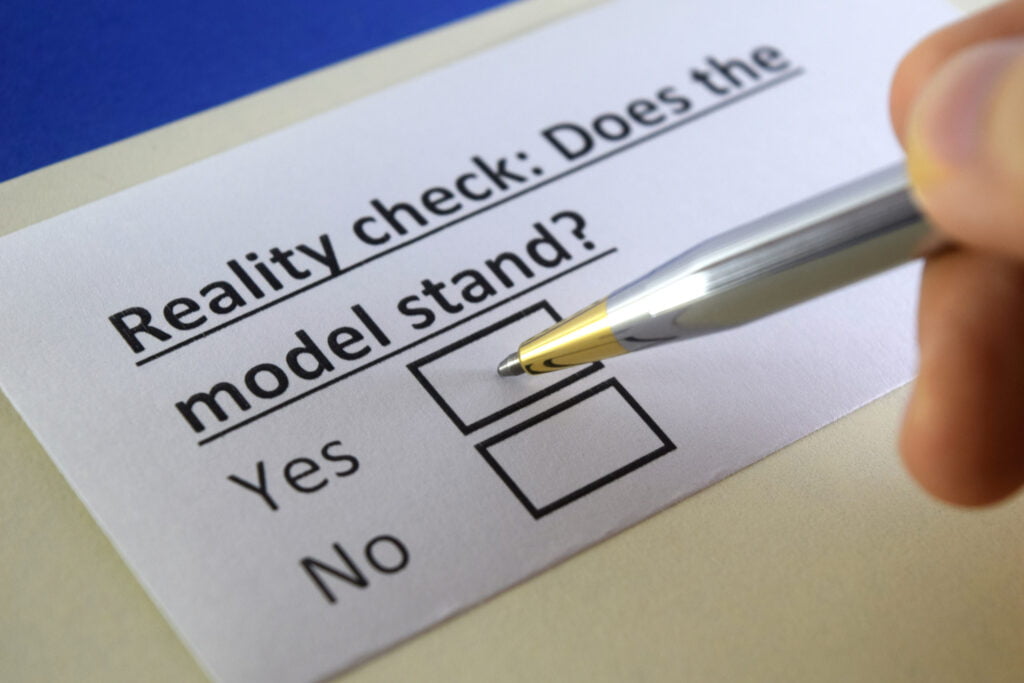
Your treatment center has thought long and hard about how you can best use the limited time available to you to best rebuild your physical and mental strength. Wasting time playing on a cell phone may be a pleasant way to kill an hour, but it’s not going to give you the tools and inner-strength needed to take on your addiction. Instead of directing your attention outward, take this time to focus on the changes that are occurring, and need to occur within yourself. Mindfulness practice, cultivating hobbies and interests, and tackling past traumas are worthwhile goals for this time. Playing Candy Crush and looking at your ex’s Instagram, not so much.
7th January 2021
Models of Therapy: Comparing / Contrasting
As our understanding of the mental processes that occur during addiction has evolved, so have our therapeutic approaches in treating this “dis-ease.” Cognitive Behavioral Therapy has become increasingly popular for dealing with addiction, to the point where it now rivals the 12-Step approach as the “go-to” treatment for many clinics and practitioners. But there are numerous other approaches out there, each with their own set of adherents and detractors. Let’s take a look at the models sparking debate in today’s recovery landscape.
12 Steps And Cognitive Behavioral Therapy (CBT)
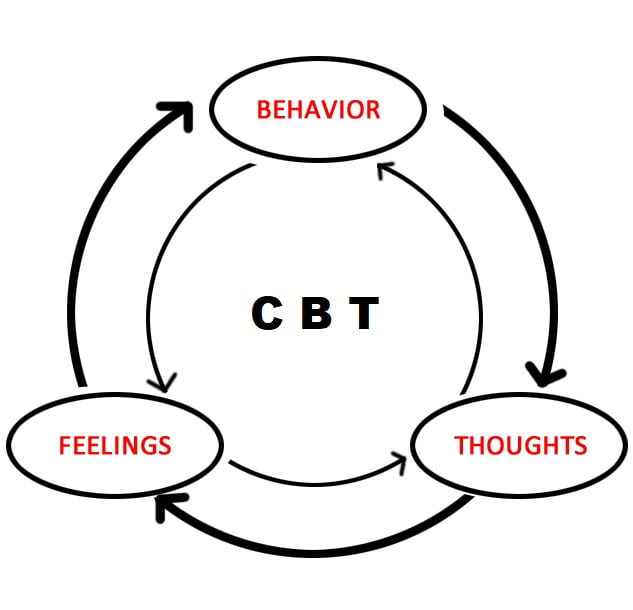
Since these are the two most well-known and frequently used therapeutic models in addiction therapy, we’ll begin by taking a look at how these approaches differ from each other, and whether they can be used in tandem.
One of the primary differences between the approaches is the “locus of control.” 12-Step models begin by pushing the addict to admit that they are “powerless” in the face of their addiction, while CBT is a method of self-help that aims to teach clients that they have the ability to regulate and control their own behaviors. The two attitudes are seemingly at odds, but as therapists at the Beck Institute note: “Patients sometimes ask us, “How can I take part in Cognitive Behavioral Therapy self-help if I have to admit to being powerless?” Our answer is that the “powerlessness” which they are acknowledging has to do with their prior behavioral and cognitive habits that were maintaining their problems with substances.” So while there is a philosophical difference between the two approaches, they can be reconciled.
Another seemingly large difference between the two methods is their guiding philosophies. The 12 Step program was initially inspired by the Oxford Group, a Christian organization which both Bill W. and Dr. Bob (the program’s founders) belonged to. As a result, spirituality is an essential component of the method, figuring prominently in the 12 Steps, 12 traditions, and Big Book. While strong efforts have been made to become inclusive of members of all faiths, agnostics, and even atheists, the spiritual component remains foundational to the movement. The 12 Step model is also based on the idea that addiction is a life-long condition without a cure, and that an addict will be an addict (hopefully in recovery) forever.
Meanwhile, CBT is based upon scientific principles rather than spiritual ones. It is meant to provide time-sensitive, practical solutions to a patient’s problems, whether with addiction, or any other disorder. It borrows components from a broad range of other therapeutic models but is essentially focused on identifying goals, and working towards them by recognizing and changing harmful patterns of thought and behavior. Simply put, the goal is to develop skills in recognizing what type of situation you’re in, moderating your thoughts and behaviors accordingly, and reacting in the way you desire. CBT models for treatment view addiction as an undesirable behavior that, when eliminated, is cured.
One final difference is the way each approach views harm reduction. The 12 Step model is based on absolute, life-long abstinence. Any slip in sobriety, even a single beer or joint, is viewed as a failure that puts the addict back to square one in treatment. CBT-based models, on the other hand, view their goal as allowing clients to lead healthier lives, and view any decrease in drug use or even a move to safer habits when using, as worthwhile goals and improvements which should be praised, and built upon.
While the differences in philosophy and approach are certainly significant, the two programs are certainly not irreconcilable. As one of our favorite precepts from the world of recovery states: “take what you need and leave the rest.” We’d guess that the majority of those in recovery have used elements of 12 Step programs and CBT in their journey to sobriety, and we’d recommend that you experiment with both and see what works for you.
SMART Recovery and The 12 Steps

Now that we’ve taken a look at the philosophical elements of both programs, let’s take a look at the differences in practice. The principles of CBT have inspired the SMART Recovery program, which can be either an alternative or a complement to 12-Step Programs. 12-Step meetings are led by peers and based on the principle of “sharing”, with participants offering their advice, experience, and struggles. In a 12-Step meeting, there is no “cross-talk”, meaning that you can’t comment on or criticize what someone else has shared. SMART Recovery meetings, on the other hand, are led by professional therapists or counselors, and cross-talk is allowed and encouraged. One powerful tool that the 12-Step model offers is the sponsor, someone who has been in recovery for a while and completed the steps, who provides advice, support, and fellowship with a newcomer. The sponsor is an extremely valuable resource for emotional support and they have proved crucially important for many recovering addicts and alcoholics.
The two approaches also differ in their conception of the addict’s journey to sobriety. In most 12-Step programs, individuals are encouraged to regularly go through the steps again. The idea that anyone in recovery is always in danger of relapse is common, hence the precept “too many years and not enough days,” which roughly means that an alcoholic or addict has become complacent, stopped actively practicing the steps, and relapsed. SMART Recovery, on the other hand, feels that those in recovery can become cured. As they write:
For many sincere participants there will come a time when attending our groups, or participating in our other services, is more in conflict with the pursuit of their life goals than enhancing them. Although these participants will always be welcome back if they want to come, this conflict signals that the time for graduation has arrived.
Other Alternatives
Existential Therapy

This form of therapy is based on the principles of existential philosophy as developed by thinkers such as Jean-Paul Sartre and Albert Camus. Treatment focuses on identifying questions relating to the meaning of life, the responsibilities, and freedom individuals have to make choices, and the individual’s place in the universe and society. This method of treatment is probably more valuable to individuals who are already on their way in recovery and are looking to find meaning in their lives and make positive choices.
Gestalt Therapy
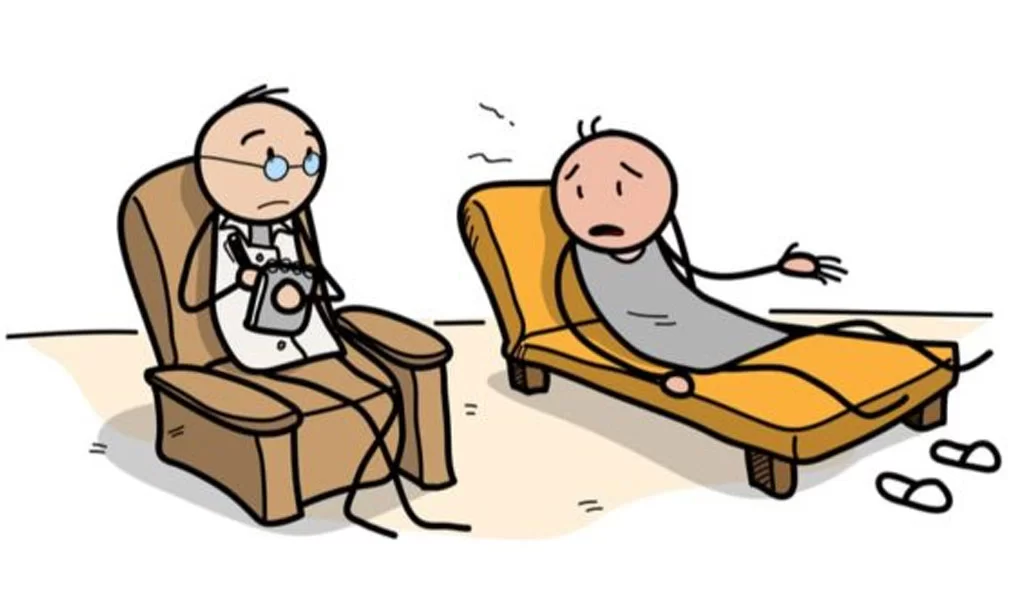
Gestalt Therapy is based on the goal of pushing the patient towards an understanding of the present based on their current reality, rather than preconceptions based on what has happened in the past. The goal is to eliminate negative thought patterns and build awareness of the control and responsibility individuals have over situations and emotions. Gestalt Therapy employs guided visualizations to promote self-awareness and personal ownership while emphasizing that recollections of the past are inherently unreliable. The guiding philosophy is that self-awareness in the present will result in more positive choices relating to physical and mental health. Gestalt Therapy is a good option for those looking to move on from past traumas.
Holistic Therapy

Holistic Therapy is a broad umbrella that contains a wide range of treatments that are generally personalized for the patient. These treatments are most effective as a complement to other forms of therapy, working to rebuild the overall well-being of those in recovery and also deal with the symptoms of withdrawal. Yoga, Tai Chi, mindfulness practice, art therapy, equine therapy, exercise, nutrition, breathwork, and music are all examples of holistic therapy. While the benefits of holistic therapy may seem peripheral to treating addiction, rebuilding overall health, learning to practice self-care, and creating positive patterns of behavior are all extremely important elements of learning to live a healthy and sober life.
Naikan Therapy

Naikan is the Japanese term for “looking inside” or “seeing oneself through the mind’s eye.” The therapy was pioneered by Ishin Yoshimoto, a devout Buddhist who sought to offer a more accessible opportunity for everyone to benefit from the arduous self-reflection demanded by many Buddhist sects.
Naikan is designed to allow us to investigate and gain perspective on our relationships with ourselves, the other people in our lives, and the nature of existence. It is focused on three fundamental questions that define interpersonal relationships:
What have I received from ______?
What have I given to ______?
What troubles and difficulties have I caused ______?
Naikan has proved useful for those dealing with addiction because it allows the patient to let go of resentments, a source of emotional pain that is particularly damaging for those dealing with addiction. Many of those who practice Naikan come to realize how much others have contributed to their lives and cultivate an invaluable sense of gratitude towards those around them.
Person-Centered Therapy

Person-centered therapy is a form of treatment where the client takes the lead, and the therapist acts as a “compassionate facilitator.” In this form of therapy, the therapist refrains from steering conversations and judging or interpreting what is said. They’re meant to exhibit empathy and encouragement while encouraging you to listen to yourself and take control of your own life. Their role is to simply guide you through the process of self-exploration, allowing you to draw your own conclusions and grow on your own. This form of therapy is recommended for highly motivated people, as well as people who struggle with trust and self-confidence issues.
Therapeutic Communities
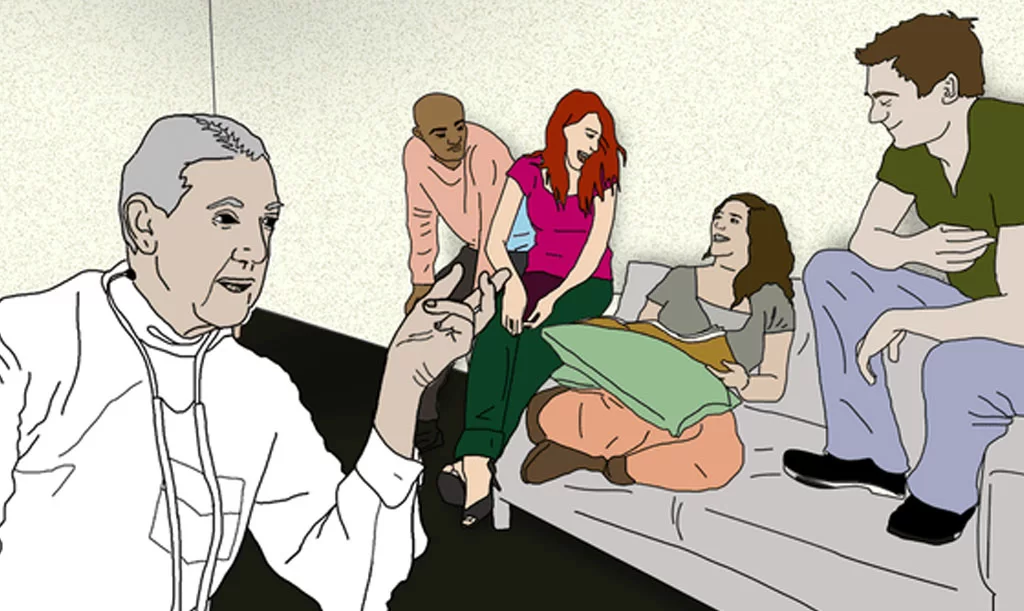
Therapeutic communities are generally long-term residences (though outpatient options do exist) that aim to use fellowship and peer-support to combat addiction. There are many different forms of TCs, some catering to individuals with dual diagnosis, the LGBTQ+ community, adolescents, and various other issues and populations. TCs leverage the power of many, and as clients progress through them they often are given positions of responsibility and even employment. The approach taken at these facilities is often described as “community as method”, where active participation in a household, and the responsibilities of social life “drive individual change and the attainment of therapeutic goals.” Therapeutic communities are especially beneficial to young people, those with severe addiction problems, and at-risk groups. They have also proven effective at boosting participation in aftercare. However, the structured, regimented nature of life in TCs and the time commitment involved mean that they aren’t the right solution for everyone.
Trauma-Informed Therapy
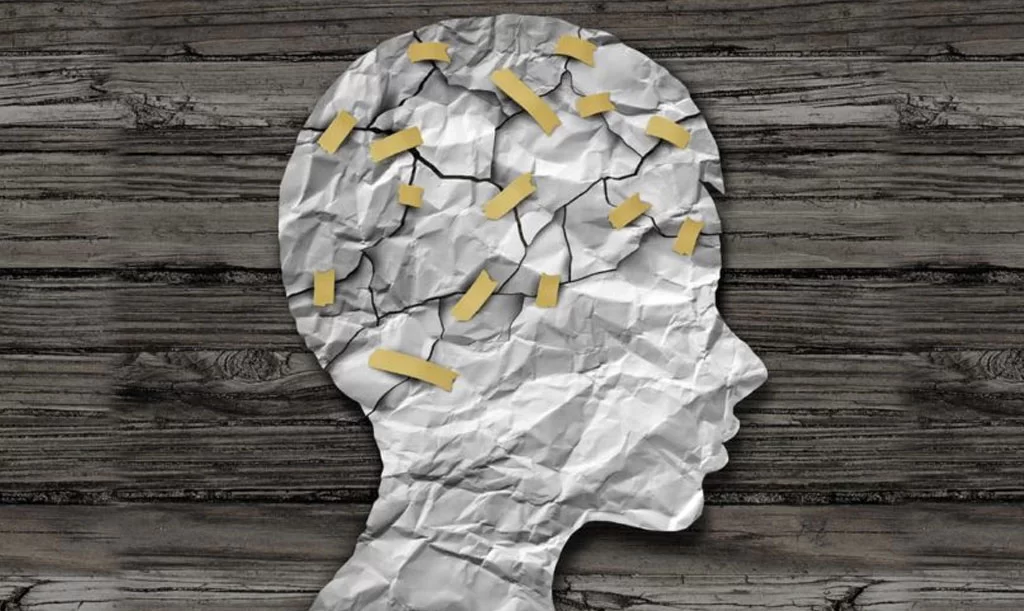
Trauma-informed therapy is a method developed by Dr. Stephanie Covington, among others, as a way to offer more effective treatment for health issues, particularly for women and girls. The American Department of Health and Human Services estimates that up to 99% of women in substance abuse treatment have suffered trauma, and both males and females who have suffered Adverse Childhood Experiences are far, far more likely to develop substance abuse issues. Trauma-informed therapy essentially entails that your treatment provider will have an awareness of how trauma reshapes the brain and alters responses to stressors, and uses that knowledge not to address the trauma, but its symptoms. Utilizing the strategies and techniques of trauma-informed therapy can be a game-changer in treating addiction, as it works to establish safety (defined as stability, adequate supports, and coping skills) before addressing serious issues and processing the roots of trauma. This approach minimizes the harms that can be caused by diving into painful memories and emotions before the patient has the coping skills to deal with them.
Next Steps

As you can see, there are myriad options for dealing with the pain which has driven your addiction, and the pain which your addiction has caused. We strongly recommend looking at all of them, and honestly assessing your personality and your needs before deciding on a course of treatment. Remember, there’s no harm in experimenting with different forms of therapy. If you have any questions about Naikan, kundalini yoga, or any of the other holistic options offered at Tabula Rasa Retreat, don’t hesitate to get in touch!
6th January 2021 • Sticky Post
High-Functioning Addicts: Why Professionals Succumb to Addiction
When we think about addiction, we generally tend to picture someone who has reached “rock bottom.” Society’s image of the addict is generally a person whose affliction has taken everything away from them. Broken families, financial ruin, powerlessness, and homelessness are often the default image our minds conjure up when addiction and addicts are under discussion. But in reality, addicts exist in all walks of life, and their circumstances can be radically different from those we’ve mentioned. Our reflexive reaction to the word “addiction” is a result of the severe stigma that surrounds this health problem and is often a barrier to treatment for those who need it most. For "high-functioning addicts", the refusal to admit the severity of the problem can often exacerbate it. That’s why we’re taking a look at the unique challenges high-functioning, successful professionals with addictions face when they need help.
Denial

For many professionals, their identity as an individual is subsumed by their career. Your job may necessitate keeping your personal opinions, feelings, and fears to yourself. And these long-held habits can be a huge barrier to admitting to yourself or those around you that you have a problem and need help with solving it. For people in high-stress jobs who are used to facing significant challenges and dealing with heavy responsibilities, admitting that you’re powerless in the face of addiction is often the most difficult step to take.
Stress

In today’s society, it’s easy to become a workaholic. Smartphones and breakthroughs in communications technology can make it seem like you never really have time off. Many professionals begin to misuse substances as a way to de-stress, often self-medicating in order to fall asleep or blow off steam. But as an addiction develops, the tension of attempting to manage an unmanageable condition while also navigating difficult and exhausting situations at work can lead you into a downward spiral where both causes of stress feed off of each other.
Fear of Professional Disgrace

Doctors, lawyers, and those in the finance industry all have wide circles of acquaintance, and all of their jobs are built on maintaining the trust of their clients. When individuals working in these areas develop problems with substance abuse, they begin to live in fear of discovery, and a sense of living in isolation with a secret generally becomes pronounced. Even mentioning words like “treatment” and “addiction” to colleagues, clients, or supervisors could come with serious professional consequences. As a result, many high-functioning people working in prestigious jobs tend to suffer in silence until their situation becomes critical. In spite of their ample resources, professionals, like the vast majority of those suffering from substance abuse disorders, are highly unlikely to receive the treatment they need.
No Time For Self-Care

People in demanding industries and professions often have a lot of difficulty taking the time that their bodies and minds need to stay healthy. When you’re looking to break free from dependence on a substance, you’ll need time to allow yourself to heal and develop the strategies and skills needed to make recovery last. It’s crucial to remember that if you are a high-functioning person in need of physical, psychological, or spiritual care to deal with a substance use disorder, delaying treatment is almost certain to exacerbate the problem. There are options out there that can work for you, regardless of how busy your schedule is.
Burnout
Demanding schedules, the difficulties of managing other people, tension-filled situations, and a sense of fatigue all lead many high-powered people to burn-out in their careers. And vulnerability to substance abuse is one of the symptoms of this condition. If you’re suffering from burnout (common symptoms are exhaustion, a compromised immune system, depression, insomnia, and a sense of isolation) you may want to factor that in when evaluating your treatment options. It’s important to ask yourself whether substance misuse is the problem or merely a symptom. You may be in need of a facility that has experience and expertise in treating both conditions.
Find Solutions That Work For You!

One of the options you should consider is an Executive Rehab Center. These facilities are designed for high-functioning addicts and alcoholics to receive the treatment they need in a setting that allows them to experience a minimum of disruption in their professional lives. Many facilities offer amenities like conference rooms, access to computers, travel support, and firm commitments to maintaining privacy which is often vitally important to clients. They’ll be willing to work your commitments and professional needs into a custom treatment plan that allows you to stay in good standing at work while dealing with your issues. These treatment centers also generally offer a more luxurious experience than you would encounter at a run of the mill treatment center, often including swimming pools, exercise facilities, and catered meals as well as a more flexible schedule. They also tend to offer comprehensive out-patient services that could offer the support you need.
Many highly successful people with addiction issues opt to receive treatment abroad. One of the main reasons for this is the guarantee of privacy. You run little risk of running into someone you know from your professional life and are all but guaranteed to keep your personal life private. You also can tell your colleagues, clients, and supervisors that you’re taking a much-needed vacation, rather than dealing with a personal issue. In many instances, taking a break from the stresses which have led you into dependence on a substance will have a hugely beneficial effect on your attitude in treatment and the outcomes you achieve. Furthermore, you may gain access to some treatments, such as ibogaine therapy or NAD+, which may not be available in your home country.
High-functioning addicts face unique obstacles in treating their addiction issues, but they also have access to a broad range of facilities and services based on their financial resources, comprehensive insurance plans, and personal connections. If you’re looking for a way to end your addiction, we’d recommend spending the time to look at all of the treatment options that are available and reflecting on your individual needs. If you have any questions about our methods, services, or treatments, feel free to get in touch today!
4th January 2021
Rehab in Spain: Why Spanish Addicts Are Heading Abroad For Treatment
Spain’s drug problems have come in waves, and epidemics of heroin use, a flood of cocaine from South America, and the constant importation of hashish from nearby Morocco ensure that the country always has a steady supply of drugs. As the opioid crisis rages on, increasing numbers of Spaniards have been experimenting with and becoming addicted to, the same opioid-based pain pills that have devastated communities across the United States. Spain’s death rates from opioid-related overdoses have increased significantly over the past decade, and many experts fear that the problem is growing exponentially worse.
Spain’s rate of cocaine use overtook the USA a decade ago and remains very high, with an estimated 3% of adults in the country using the substance. In spite of the government’s record-breaking number of seizures, the country’s rugged 3000 km long coast makes it Europe’s gateway for smuggled cocaine from South America. Mexican cartels have long used Spain as the first stop on the journey of their products across Europe.
A recent Guardian article also highlighted the problems caused by “narcopisos,” apartments left vacant following the nation’s property crash, which have been overrun with drug dealers and users. In neighborhoods like Barcelona’s El Raval district, residents have seen their lives and communities turned upside down by rampant drug use and the problems it brings. According to the newspaper, “dealers use apps to help customers find the flats where drugs are available. They also tie colored cloths to balconies to signal availability: white for heroin available, blue meaning they are under police surveillance, and red for out of stock.”
The economic crisis has exacerbated Spain’s drug problem while draining the funding needed for measures to combat addiction. According to the head of a Madrid resident’s association, “you have to ask yourself what’s happened to all the preventative resources that existed in Madrid? They basically had the plug pulled during the economic crisis.” 39% of those entering treatment in Spain are primarily cocaine users, while 24% of those seeking to battle their addictions are habitual heroin users. And while the various levels of government support rehab in Spain, thanks to the economic crisis, funding has remained flat, raising wait times and leaving the average rehab in Spain overflowing with clients. If you’re a drug addict in Spain looking for solutions and a sense of hope, turning your gaze abroad may seem like the wisest approach.
Why Portugal?

Portugal was in the midst of an epidemic of heroin addiction (much like Spain’s heroin problem in the 1980s) when they made the dramatic decision to embrace the principles of harm-reduction and decriminalize the consumption of all drugs. As one of the architects behind Portugal’s new approach explains it: “We realized we were squandering resources. It made much more sense for us to treat drug addicts as patients who needed help, not as criminals.” By removing the threats of prosecution and incarceration, Portugal has reduced the stigma surrounding addiction, and the number of addicts receiving treatment has increased by 60% since 1998. The results the country has achieved simply by treating addicts with dignity and viewing addiction as a health issue has caused countries such as France, Switzerland, and Germany to embrace harm-reduction. Portugal’s clear-headed, compassionate approach to treating addiction makes it an ideal destination for those attempting to overcome substance-abuse problems.
Spain has embraced some of the principles of harm-reduction, particularly removing the threat of jail for drug possession. But the country still depends heavily on opioid replacement therapy, primarily using methadone, as a way to treat opioid addiction. While methadone can stabilize the lifestyles of addicts and prevent HIV, it leaves those seeking rehab in Spain dependent on a narcotic substance and does little to address the issues underlying addiction. If you’re looking to truly defeat your addiction, methadone likely isn’t the best option.
Some publicly funded options for rehab in Spain are available, and there are also privately run residential treatment facilities. These centers have the benefit of being close to home, but for Spaniards without substantial bank accounts, the cost of effective treatment in a comfortable setting can be staggering. Luxury private facilities have rates rising as high as 50,000 Euros per month! And if you’re looking for a publicly funded facility, you need to be prepared for wait times spanning weeks, or even months, before being placed in an overcrowded and under-funded treatment facility. The shortage of treatment beds and affordable facilities has pushed many addicts to the brink of despair.
In theory, seeking treatment at a rehab in Spain not put you at risk of stigma for being an addict in a society that views drug use very harshly. But if you’re living in a small community, word might still spread. If you’re looking to be treated with dignity and respect, experience compassionate care, and maintain your privacy, going abroad might be your best option. Drug addiction is still viewed harshly in many Spanish communities, with studies finding that addiction carries more stigma than mental illness. In many small towns, the addicted are still seen as criminals who have succumbed to a “moral failing” rather than sick people in need of medical treatment. If you’d prefer to be treated as a person, rather than a junkie, as you begin your recovery journey, you might want to consider seeking treatment in Portugal!
What Are The Benefits Of Treatment Abroad?
1)
Leaving an environment full of familiar stressors and temptations can have a beneficial effect on treatment, and Portugal is a great place to recover from the traumas related to addiction. It’s a picturesque country with a lovely Mediterranean climate. It’s dotted with quaint villages, ancient ruins, majestic castles, and miles of beautiful coastline. And there are few regions better suited to recovering your health than Portugal’s sun-drenched Alentejo region. A land of rolling hills and vast plains, the Alentejo offers visitors the opportunity to recover their health and connections to the natural world by riding horses, watching birds, stargazing, hiking, and cycling. Many Spanish visitors are especially appreciative of the temperate climate, peaceful lifestyle, and delicious regional fare, all while feeling at home with a climate, culture, and society that is familiar enough to feel welcome. All this, while enjoying a spain rehab center facility that rivals a luxurious resort or hotel for a fraction of the cost of treatment back home. You’ll disconnect from a toxic environment and share amazing new experiences with people from all around the world!
2) Privacy

While increasing numbers of people are coming to the understanding that addiction is a medical issue, there is still a significant social and professional stigma that comes with seeking treatment for substance abuse. If you head to Portugal, it’s easy to tell friends, family members, and colleagues that you’re off on a much-needed vacation and avoid awkward conversations and prying questions. There’s also no risk that someone will spot you emerging from a clinic or support group meeting and start whispering.
3) Promising Treatments Unavailable At Home

We’ve written a lot about the undeniable power of ayahuasca and iboga to combat the addictive properties of opioids and other drugs and to open the addicted mind to the idea of a positive transformation into sobriety. Because Portugal has decriminalized all drugs, promising treatments that cannot be obtained in a safe medical setting in Spain (due to their somewhat murky legal status) can be accessed here with the supervision of health-care professionals.
4) Easy Intake

When you’ve reached rock bottom, a treatment center that can quickly start the process of detox and recovery can be a lifesaver. The prospect of waiting months for the in-patient treatment you need can be a heart-breaking, motivation-sapping roadblock. Options for rehab in Spain are often underfunded, one of the main reasons why the majority of Spanish addicts are pushed into less intensive outpatient treatment programs and methadone maintenance. Treatment centers abroad can immediately start the intake process, allowing you to strike back at your addiction when you’re feeling hopeful and motivated. This can make all the difference in the world!
Iboga Tree Healing House

At Iboga Tree Healing House we have a unique ability to accommodate clients from around the world with our welcoming, open-minded, and international staff. You’d be hard-pressed to find a treatment center more committed to the safety of their clients than Iboga Tree Healing House. We’re also deeply committed to maintaining a supportive and non-judgmental environment for facilitating recovery and personal growth.
In addition to offering iboga therapy, we also provide a wide array of holistic treatments, including breathwork, kundalini yoga, equine-assisted therapy, kambo, and more. All of these practices are extremely beneficial for re-energizing both body and spirit to pursue recovery. In combination with our ten hectares of outdoor space, large terraces, and outdoor swimming pool, we let nature remind our clients to be grateful and receptive to new horizons and second chances. We have many testimonials from people around the globe who’ve benefited immeasurably from experiencing our treatments in beautiful, sunny Portugal. If you’d like to experience treatment abroad, don’t hesitate to get in touch!



